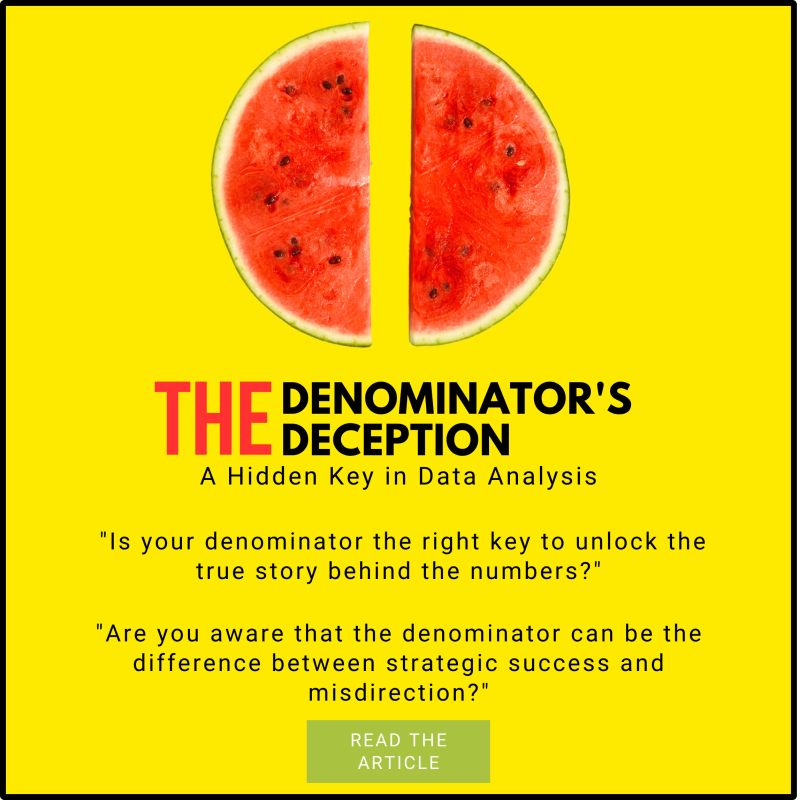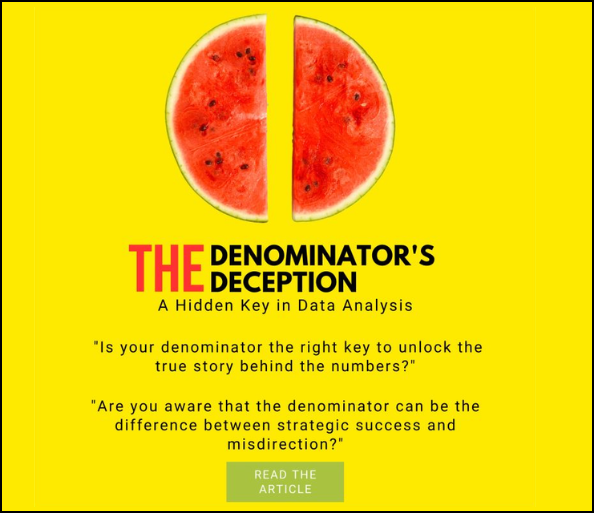In the world of data analysis, precision is paramount. Every decision, strategy, and insight depend on the accuracy of the numbers we use. Yet, often overlooked but profoundly influential, is the enigmatic denominator. It can be the difference between strategic success and misdirection.
Consider this scenario: you are a senior manager at a top-tier firm, aiming to gauge your product’s market share in a competitive landscape. Calculating market share by comparing your company’s sales revenue to the entire industry’s may initially yield a satisfying 15%. However, upon closer examination, you realize that the Total Available Market (TAM) includes revenue generated by a couple of industry giants, representing 80% of the total. Suddenly, your 15% market share seems less impressive. This discovery prompts a re-evaluation of your company’s competitive position.
The Denominator: A Beacon of Precision
The choice of denominator is pivotal in unlocking precision in data analysis. It is not just a mathematical concept; it underpins the quality of insights. Let us break down its impact into critical dimensions:
Quantity: The denominator defines the scale of analysis, leading to different conclusions for subsets or the entire dataset.
Quality: For instance, calculating customer satisfaction as the ratio of satisfied customers to total customers overlooks the quality of patrons. Focusing on repeat customers or high-value clients provides a more nuanced perspective.
Sensitivity: A smaller denominator heightens sensitivity to individual variations, while a larger one may obscure trends.
Urgency: In healthcare, precise denominators in analysing hospital readmission rates ensure resource allocation where needed most.
Complexity: Segregating data through denominators can inform targeted strategies in complex analyses.
Nature: Different scenarios necessitate distinct denominators for accurate assessments.
Reference from Influential Sources
In the Harvard Business Review article, “The Denominator Dilemma: A Guide to Accurate Metrics,” John Smith emphasizes the importance of choosing the right denominator to avoid misleading conclusions (Smith, 2019).
A study in the Journal of Data Analysis and Decision Making, “Denominator Matters: The Impact of Sample Size on Statistical Conclusions” (Johnson et al., 2020), underscores how variations in the denominator significantly affect statistical conclusions.
Embracing the Denominator’s Role
As senior leaders and data analysts, rigorous scrutiny of the denominator’s appropriateness is essential. When encountering ratios, indices, or percentages, always question the denominator’s suitability. Is it the key to unlock the truth within the data? Challenge assumptions, dissect the data, and prioritize precision.



